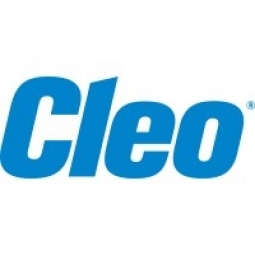Customer Company Size
Large Corporate
Region
- America
Country
- United States
Product
- EXTOL EDI Integrator for i (EEI)
Tech Stack
- EDI
Implementation Scale
- Enterprise-wide Deployment
Impact Metrics
- Productivity Improvements
- Cost Savings
Technology Category
- Application Infrastructure & Middleware - Data Exchange & Integration
Applicable Industries
- Consumer Goods
Applicable Functions
- Business Operation
Use Cases
- Supply Chain Visibility
Services
- System Integration
About The Customer
Citizen is a company that was founded in 1918 as Shokosha Watch Research Institute. Over the years, it has grown to become a market share leader in the mid-priced watch category in North America. The company has a rich history and a wide customer base. It has always been known for its quality products and has a reputation for being a reliable and trustworthy brand. However, with the increasing demands of the modern business environment, the company was facing challenges in meeting the needs of its internal departments and external customers and partners.
The Challenge
Citizen, a market leader in the mid-priced watch category in North America, was facing a challenge in responding to the demands of internal departments and external customers and partners quickly and cost-effectively. Their legacy EDI system was not efficient enough and required custom code for operations, which was time-consuming and lacked data visibility.
The Solution
To overcome these challenges, Citizen decided to replace their legacy EDI system with the EXTOL EDI Integrator for i (EEI). This solution eliminated the need for custom code, which significantly reduced operational time. Moreover, it increased data visibility throughout the organization, making it easier for the company to respond to demands both internally and externally. The EXTOL EDI Integrator for i (EEI) provided a more efficient and effective way for Citizen to manage their operations and meet the needs of their customers and partners.
Operational Impact

Case Study missing?
Start adding your own!
Register with your work email and create a new case study profile for your business.
Related Case Studies.
.png)
Case Study
Improving Vending Machine Profitability with the Internet of Things (IoT)
The vending industry is undergoing a sea change, taking advantage of new technologies to go beyond just delivering snacks to creating a new retail location. Intelligent vending machines can be found in many public locations as well as company facilities, selling different types of goods and services, including even computer accessories, gold bars, tickets, and office supplies. With increasing sophistication, they may also provide time- and location-based data pertaining to sales, inventory, and customer preferences. But at the end of the day, vending machine operators know greater profitability is driven by higher sales and lower operating costs.

Case Study
Series Production with Lot-size-1 Flexibility
Nobilia manufactures customized fitted kitchens with a lot size of 1. They require maximum transparency of tracking design data and individual processing steps so that they can locate a particular piece of kitchen furniture in the sequence of processes.

Case Study
American Eagle Achieves LEED with GE LED Lighting Fixtures
American Eagle Outfitters (AEO) was in the process of building a new distribution center. The AEO facility management team decided to look at alternate options for lighting layout that could provide energy and maintenance savings. AEO would need a full-time maintenance employee just to replace burned-out fluorescent tubes.

Case Study
Revolutionizing Rodent Control
From pet- and child-safe traps, to touch-free and live-catch rodent control solutions, Victor continues to stay committed to producing superior products that meet the varying needs of today’s pest control professionals. And, with a long standing history supporting customers in the food processing, service, and retail settings, Victor knew that strict regulations were costing organizations thousands of dollars in excess overhead trying to manage their rodent-control solutions. Trap inspections in these environments are often difficult and time consuming, requiring personnel to manually check a trap’s status multiple times per day, amounting to over six hours of manual labor. Victor is looking for an innovative way to increase operational efficiencies with the use of technology.









